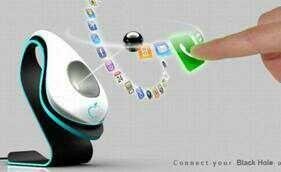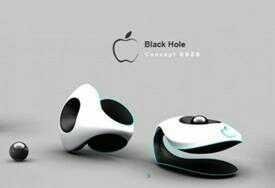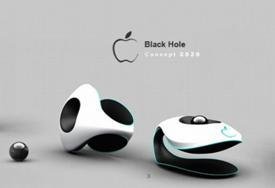Holographic Black Hole Mobile Phone Design as a Future Mobile Phone Technology
The students today are highly appreciated by the rapidly developing and sophisticated development of Information technology, making it very easy to access information related to the material studied at the university.
In contrast to the 90s generation who had to bother looking for books from other libraries to find the lesson material they needed. The development of information technology certainly brings a very positive impact for the world of education. Students can easily gain knowledge from internet searches and access through other media.

 )
)One application of holographic technology is Holographic Black Hole Mobile Phone Design. Touch screen phone with multi-touch technology is pretty cool in the future. Here you can see a conceptual design based on holographic display technology. This phone is designed for Apple by Josselin Zaigouche, but unfortunately, Holographic Black Hole Mobile Phone Design will not be marketed before 2020.

 )
)Holography is a technique that allows scattered light from an object to be recorded and then reconstructed so that it appears as if the object is in the same position relative to the recording medium as it was recorded. Image changes as the position and orientation of system changes see in exactly the same way as if an object is still present, thus making the recorded image (hologram) appear three-dimensional. Holographic techniques can also be used to store, retrieve, and process optical information.

 )
)A recent patent revealed that Apple, the company behind the iPod and iPhone, has been working on a new type of screen display that produces three-dimensional images and even holograms without the need for glasses. This technology can be used to generate a new generation of televisions, computer monitors and cinema screens that will provide viewers with a more realistic experience. This system relies on a special screen adorned with a small pixel dome that deflects images taken from slightly different angles to the right and the left eye of the viewer.
By displaying images taken from different angles slightly to the right and the left eye, this creates a stereoscopic image that the brain interprets as three-dimensional. Apple also proposes using 3D imaging technology to track the movements of various audiences and their eye positions so that the direction of the image being deflected by the screen can be smoothly adjusted to ensure the image remains sharp and in 3D.

This post has been rewarded with 30% upvote from @indiaunited-bot account. We are happy to have you as one of the valuable member of the community.
If you would like to delegate to @IndiaUnited you can do so by clicking on the following links: 5SP, 10SP, 15SP, 20SP 25SP, 50SP, 100SP, 250SP. Be sure to leave at least 50SP undelegated on your account.
Please contribute to the community by upvoting this comment and posts made by @indiaunited.